Update: This article was last updated on 20th March 2025 to reflect the accuracy and up-to-date information on the page.
Do you know the size of the artificial intelligence (AI) market? GrandViewResearch estimates the global AI market at $136.6 billion today and will increase to $1.81 trillion by 2030. New artificial intelligence technologies emerge daily, showcasing the new in AI and AI innovation. Entrepreneurs and inventors are doing a tremendous job in AI technology innovation and finding out how far AI has come. They are attempting everything within their means to tap the most out of this cutting-edge technology by capitalizing on recent developments in AI and advancements in artificial intelligence.
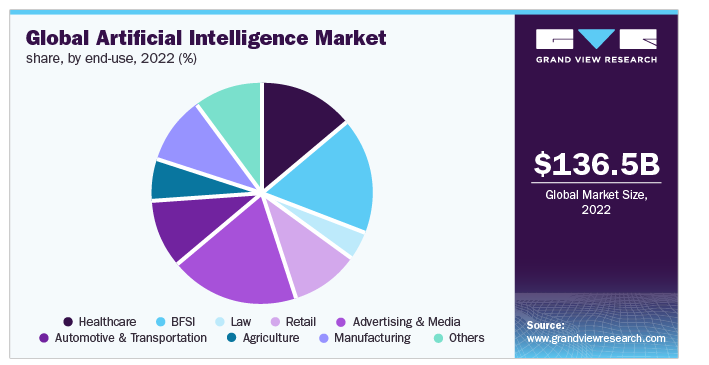
Data analysis is the optimal way to grasp the development of AI. So, let’s have a look at the numbers first!!
- The AI or artificial intelligence software industry will reach 126 billion dollars in terms of revenue by 2025, according to Statista.
- 37% of businesses have already adopted AI to some extent, according to Gartner. The percentage of businesses that leverage AI has increased by 270% over the last four years.
- AI would be used in 95% of consumer interactions by 2025, as predicted by Servion Global Solutions.
- The market for AI software is anticipated to increase by over 54% year over year until 2020, according to a Statista analysis, and will be valued at an estimated USD $22.6 billion.
The interesting facts from the field are evolving rapidly and transforming many industries and impacting our lives. So, we at Moonpreneur have listed 10 significant developments in the field of AI.
| Sr. No | Latest Developments in AI |
| 1. | GPT-3 |
| 2. | Computer Vision |
| 3. | AI in Healthcare |
| 4. | Reinforcement Learning |
| 5. | Explainable AI |
| 6. | Transfer Learning |
| 7. | AI-assisted creativity |
| 8. | Virtual agent |
| 9. | Biometrics |
| 10. | AI-optimized hardware |
1. GPT-3
GPT-3, developed by OpenAI, is a cutting-edge language model with 175 billion parameters. It has revolutionized the creative space as one of the most advanced AI language models. GPT-3 showcases the latest developments in AI, reflecting significant strides in AI advancements and artificial intelligence development. As a prime example of advances in artificial intelligence, it demonstrates how far AI technology development has progressed in recent years. The model has become a benchmark for new artificial intelligence systems, marking a milestone in recent developments in AI and highlighting how far AI has advanced in the tech landscape.
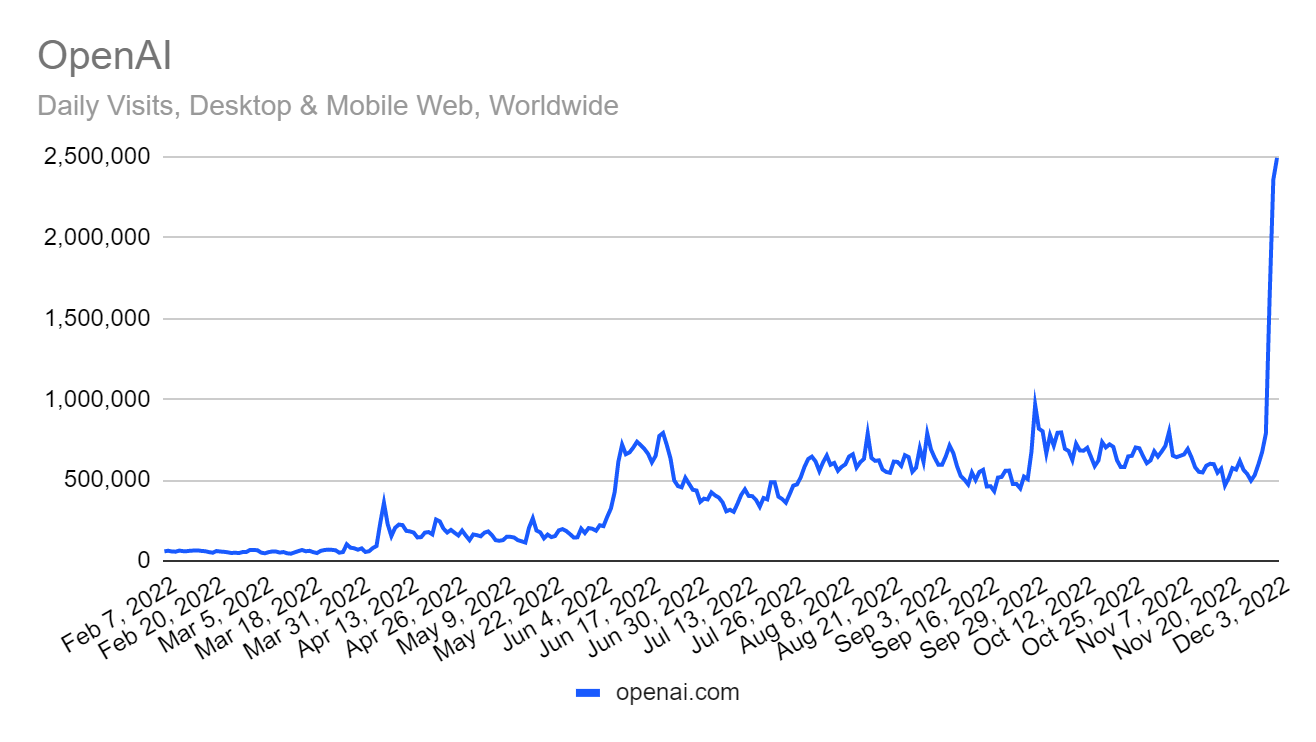
GPT-3 Features
- GPT-3 performs Natural Language Processing (NLP) tasks like translation, summarization, and question-answering across multiple languages.
- It uses deep neural networks to produce human-like speech and contextually relevant responses.
- There are, however, risks of bias and inaccuracy in the output based on the massive training dataset employed.
2. Computer Vision
Computer vision, one of the AI innovations, allows for computers to process digital images and categorize objects, people, and activities. Recent developments in artificial intelligence have enabled robots to match human levels of performance in tasks such as object detection and emotion recognition. This achievement proves how emerging artificial intelligence technologies continue to develop.
Developments in artificial intelligence have enabled robots to execute sophisticated tasks, highlighting the new AI advancements in areas such as AI technology development. The extent to which AI has evolved is resolved by the fast-paced recent progress in AI, encompassing advancements in object detection and emotion recognition, the twin pillars of artificial intelligence research. Such recent advancements in AI underscore the revolutionary potential of this technology.
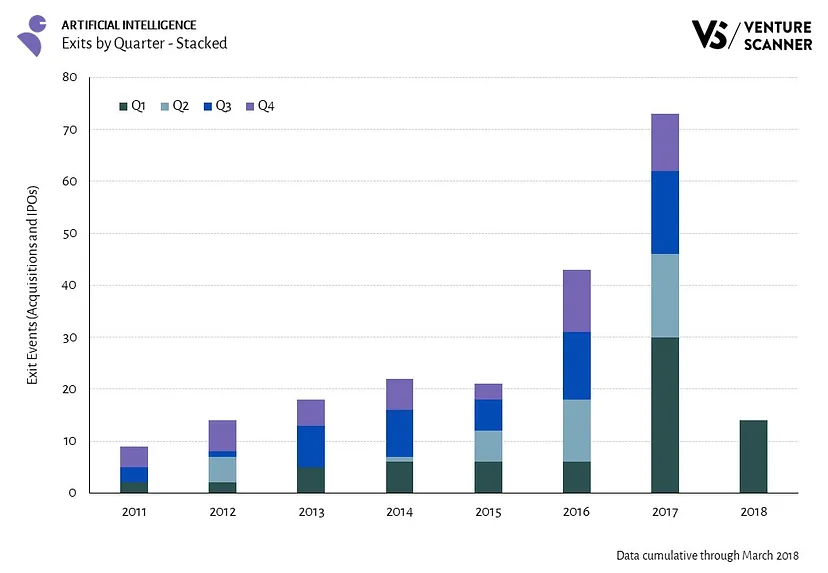
Features of Computer Vision:
- Convolutional Neural Networks (CNNs) constitute a major breakthrough in deep learning, designed exclusively to process visual data.
- Computer vision has future prospects in manufacturing, retail, and entertainment sectors.
- It is also important in augmented and virtual reality for creating engaging virtual worlds that react to user motions.
- With the growth of computer vision, robots will be increasingly able to understand visual information.
Recommended Reading: TOP AI NEWS OF 2023
3. AI in Healthcare
AI has a pivotal role to play in personalized medicine. It helps in crafting a patient’s treatment plans according to their health history and genetic profile. This indicates how much AI has evolved to comprehend individual requirements and develop customized solutions, which is one of the newest developments in AI.
Artificial intelligence developments have also greatly enhanced medical image algorithms to perform beyond that of human capabilities in disease diagnostics from X-rays, MRIs, and CT scans. Such development of artificial intelligence makes it possible to provide earlier and better treatments, highlighting the strength of new artificial intelligence technologies in the medical world.
Current developments in AI and current developments in AI show how AI technology developments are revolutionizing the medical world.
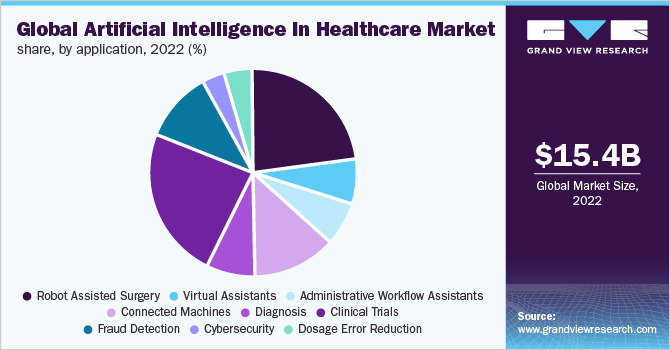
Characteristics of AI in Healthcare:
- The use of AI in healthcare can transform patient monitoring, lower healthcare costs, and improve medical efficacy.
- In addition, AI is used to design new drugs and estimate best patient response to given therapies, resulting in better treatment outcomes and cost savings.
To make sure that AI is used in a responsible and transparent way, ethical principles like data confidentiality and bias in algorithms need to be addressed with utmost care.
4. Reinforcement Learning
Reinforcement learning is a form of training in which rewards or punishments are utilized to instruct AI agents, making it possible to create self-driving cars and other autonomous systems. It is a vital method behind the latest breakthroughs in AI and advancements in artificial intelligence, especially in new artificial intelligence systems. By concentrating on AI development and AI technology progress, reinforcement learning has driven current AI advancements, showing how far AI has evolved. These methods illustrate the ability of artificial intelligence development in industry transformation through recent developments in AI.
Key Characteristics of Reinforcement Learning:
- Agent: The agent acts within its environment and makes decisions.
- Environment: The environment is the world outside the control of the agent.
- Reward Signal: The agent is provided with feedback in the form of reward signals to learn and enhance its actions.
Reinforcement learning has real-world applications in training virtual assistants to speak effectively and allowing autonomous robots to move around independently.
5. Explainable AI
One of the main issues in AI innovations is the “black box” problem, where algorithms make correct predictions but are not transparent in their decision-making process. Recent advancements in artificial intelligence have led to the emergence of Explainable AI (XAI), which seeks to bridge this gap by developing AI systems that are accurate and comprehensible. With improvements in artificial intelligence and emerging artificial intelligence technologies, XAI is directed at providing greater transparency and interpretability to the decision-making process of algorithms. As one of the recent developments in AI, this method is an important advancement in artificial intelligence research to ensure AI technology development bridges the gap between precision and intelligibility. It is important to know how far AI has progressed in interpretability, considering the importance of the recent developments in AI.
Important Features of Explainable AI:
- Accuracy and Transparency: XAI aims to create AI systems that are capable of explaining their predictions or judgments in a human-understandable manner.
- Interpretable Models and Post-hoc Justifications: Methods like interpretable models and post-hoc justifications are employed to design understandable AI systems.
Illustrations, Stories, and User Interfaces: Explanations can be given by means of visualizations, stories in plain language, or interactive user interfaces, enabling users to investigate how the AI system reaches decisions.
6. Transfer Learning
Transfer learning is another valuable concept in AI, where learning from one area of expertise is applied to address similar problems in a different area more efficiently. This method is an important part of AI progress and new AI developments because it enables models to learn effectively across various tasks. With the advancement of artificial intelligence development, the use of transfer learning remains a foundation in new AI developments and artificial intelligence progress.
With new techniques of artificial intelligence arising, development in AI technology continues to gravitate towards understanding how much more advanced AI is becoming in tapping pre-trained models for various purposes. This is the significance of being current in what is newest in AI and delving into novel solutions facilitated by this rising technology.
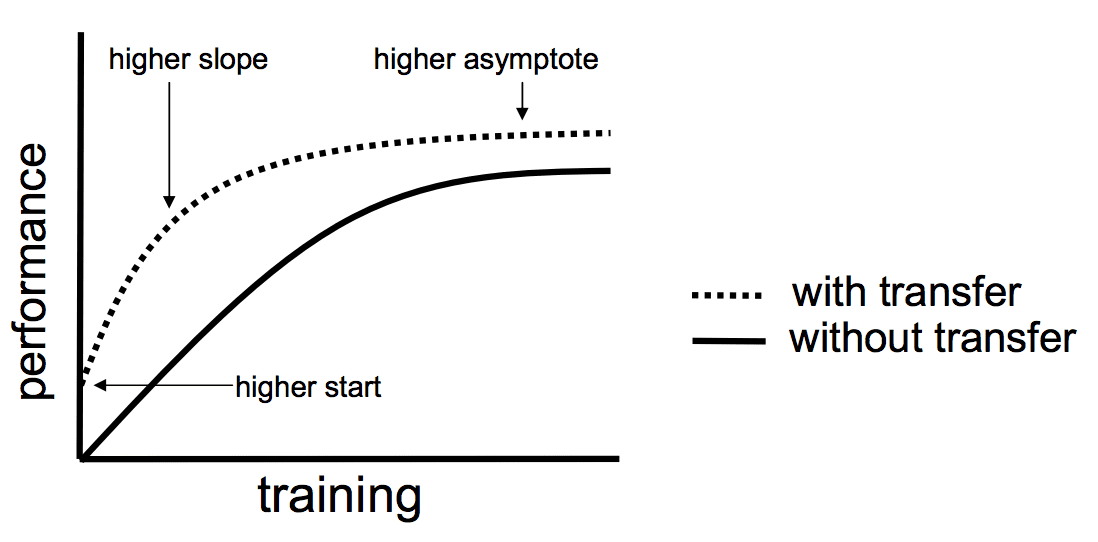
Features of Transfer Learning:
- Domain Adaptation: Transfer learning facilitates the use of knowledge acquired through solving one issue to solve another, albeit distinct, related issue.
- Domains and Applications: Transfer learning has been effectively utilized in many domains such as computer vision, natural language processing, and audio analysis.
- Effective Utilization of Resources: It facilitates effective and efficient utilization of existing models and resources for solving new issues.
In totality, Explainable AI and Transfer Learning both have important contributions to make toward making AI more transparent, understandable, and capable of solving complex problems.
7. AI-facilitated creativity
AI has made tremendous shifts in many areas of our lives, and one such area is how it has impacted the creative process. AI-facilitated creativity is an emerging field with much potential for revolutionizing the art of creativity. AI innovations and emerging artificial intelligence technologies are constantly transforming the manner in which creators work, facilitating innovation at a pace never before seen. With current AI advancements and the most recent AI innovations, the limits of creativity are being pushed. As artificial intelligence development continues, the incorporation of artificial intelligence advances into creative processes underscores the revolutionary potential of AI technology development. These recent advances in AI prompt the question: how much has AI progressed in augmenting human creativity?
Features Of AI- assisted creativity:
- Integration of Technology: With the ongoing advancement of technology, it will increasingly be an integrated part of the creative process.
- Consideration of Consequences: It is important to thoroughly think through the possible consequences of AI-assisted creativity and ensure proper and responsible use.
- Tasks in AI-Assisted Creativity: AI models can create artwork, music, and writing, among other creative tasks.
- Imitating Artistic Styles: AI models have been able to imitate artistic styles, enabling the creation of artwork that looks like the work of renowned artists.
- Creating Music: AI models can also create music, generating original pieces that engage listeners.
- Co-Authoring Scientific Publications: Moreover, AI models also proved capable to co-author scientific publications, assist researchers in producing papers.
At large, AI-supported creativity paves the way for new and broader artistic opportunity and collaboration possibilities but requires rigorous contemplation and wise application for making the best use of the same.
8. Virtual agents
Virtual agent, often referred to as an intelligent virtual agent, virtual representative, or chatbot, is a type of computer software aimed at dealing with individuals. These computer programs mostly depend on pre-programmed rules, usually applied in customer care, to offer answers to questions. The recent AI innovations in the virtual agent sector are revolutionizing the way they react, becoming smarter through the latest artificial intelligence advancements. With AI innovation quickly changing the industry, these agents are now capable of offering quicker and more tailored experiences. The new AI technologies are enabling virtual agents to perform more complicated tasks. The development of artificial intelligence has reached a level where virtual agents are now able to comprehend natural language more precisely, mirroring the current AI advancements in the sector.
The progress in artificial intelligence has greatly influenced the functionality of virtual agents, expanding the scope of what they can do. Recent advancements in AI have made virtual agents smarter at anticipating customer needs. Understanding how much AI has progressed in the last few years has showcased how AI technology advancement is transforming customer service at a record speed. The newest advancements in AI are making virtual agents more intuitive and responsive across different situations.
Key Features of Virtual Agents:
- Instructional Design Tools: Virtual agents have become useful instructional design tools, facilitating the presentation of educational content and assistance.
- Chatbots and Conversational Agents: Chatbots, or conversational agents, are used in web and mobile apps. They are customer service agents, interacting with humans and answering their questions.
- Broad Range of Operations: Virtual agents can respond to a range of questions, give information, recommend, and even carry out actions on behalf of the user.
Virtual agents provide easy and interactive means for users to access information and assistance and are becoming increasingly useful across a range of fields.
9. Biometrics
Biometrics is the quantification of biological or behavioral characteristics utilized to recognize people. Most of these characteristics are innate and cannot be predicted or stolen. Development in AI has had an immense influence on biometrics, advancing accuracy and security in identification systems. The merging of AI technological development has opened the gates to more sophisticated biometric systems. With ongoing advancements in AI, predicting and augmenting biometric characteristics has become ever more advanced.
These developments in artificial intelligence are redefining the future of biometrics, as new artificial intelligence algorithms enable quicker and more secure ways of identifying individuals. Consequently, the most recent AI advancements have led to advanced biometric solutions, which are more efficient and more difficult to imitate. AI technology keeps developing, and its impact on biometric systems is a testament to how far AI has come in the past few years.
Features Of Biometrics:
- Securing Everyday Life through Biometric Identity: Biometric identity is growing increasingly important to secure everyday security. Biometric characteristics provide a replacement for classic password schemes in computers, cell phones, and limited-access sites.
- Biometric Authentication in Organisations and Customer Identification: Biometric authentication technologies, including fingerprint, facial, and iris scans, are used to authenticate the identity of employees at organisations and to meet KYC (Know Your Customer) and KYB (Know Your Buyer) requirements for customer identification.
- Secure Biometric Authentication Solution: With the integration of biometric authentication information, it is a secure authentication solution, thereby making it difficult for the fraudster to mislead the system.
10. AI-optimized hardware
AI-optimized hardware means customized hardware architectures or elements developed and tuned to speed up AI and machine learning (ML) workloads. Graphics Processing Units (GPUs) and Tensor Processing Units (TPUs) (Google’s AI accelerators) are some examples of such hardware. These AI innovations have brought dramatic improvements in artificial intelligence, making AI systems more efficient and powerful overall. With recent advancements in AI, including new artificial intelligence technologies, hardware has become more advanced and specialized, opening the door to further advancements in many areas. As AI technology development keeps advancing, how much AI has progressed can be observed in its capacity to solve more complex problems. The most recent developments in AI portend that we stand on the threshold of new possibilities, and the most recent innovations in AI are breaking grounds in ways which were previously unimaginable.
Characteristics Of AI optimized hardware:
- AI-optimized hardware tends to depend on processing power of regular CPUs to make its operations better.
- The business world demands a lot of AI software, causing an increasing market for supporting hardware.
- To support the strength of AI algorithms, companies are creating new hardware devices such as GPUs and Google’s TPUs.
- These processors have the capability to speed up AI algorithms and result in considerable improvements in results.
Finally, the universe of AI is large and continues to grow, essentially revolutionizing the way we work and live. The examples covered here only touch upon its possibilities. To maneuver this ever-changing environment successfully, we need to keep ourselves abreast of current AI advancements, AI breakthroughs, and new artificial intelligence. Keeping ourselves posted on AI breakthroughs and current developments in AI enables us to take well-informed decisions and confidently define our future course of action.
How much has AI progressed, and with ongoing artificial intelligence development, possibilities are always increasing. Knowledge of these AI technology advancements is important in adopting the advancements in artificial intelligence that will influence industries and everyday life.
Moonpreneur is dedicated to revolutionizing conventional education and future-proofing the next generation with comprehensive learning solutions. Its Innovator Program is developing tomorrow’s workforce by educating students in AI/ML, Robotics, Coding, IoT, and Apps, facilitating entrepreneurship through experiential learning.



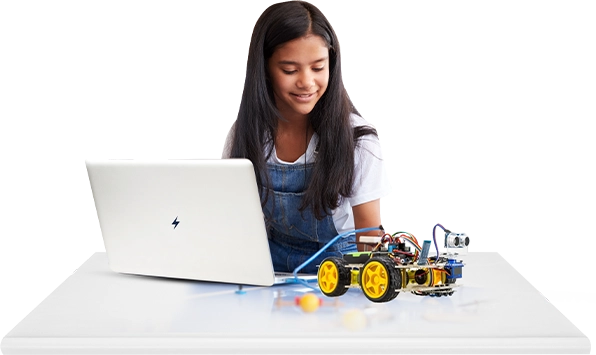




















I am a practicing nurse and this blog provided an efficient overview of the latest developments in AI and their impact on different industries, along with the potential benefits and concerns associated with each advancement. But can you please specify the importance of AI in healthcare?
Hello, Dr. Halley it looks like you are a doctorate and AI will definitely help you in your profession. AI has the potential to revolutionize healthcare by improving diagnosis accuracy, optimizing treatment plans, reducing medical errors, and enabling personalized medicine. It can also analyze large amounts of data and improve research and drug development.
This is kind of an introduction to AI. It would be helpful to see more specific examples of how AI is impacting each of the mentioned economic sectors, as well as more in-depth analysis of the potential ethical implications of AI.
I recently read about Generative Adversarial Networks. They consist of two neural networks competing against each other, with one network generating new data and the other network trying to discriminate between real and generated data. From image generation to Clothing Translation, it has several real-life world applications. Seems this new concept will change the AI world forever.
What is the current status of artificial intelligence?
AI is advancing towards Theory of Mind, where machines exhibit human-like decision-making, leading to the perception of having a mind.
AI is bullshit. It is doing things which is making today’s generation less creative and more dependent on technology.
AI advancements are fine but we can’t ignore its negative impact on employment and job displacement.
Do you think one day, AI would completely take over human jobs?
Although AI has been a very helpful human partner, but Regardless of how well AI machines are programmed to respond to humans, it is unlikely that humans will ever develop such a strong emotional connection with these machines. So I don’t think AI can replace humans, especially as connecting with others is vital for business growth.
U have missed to mention Cybersecurity and Quantum AI
Is Alexa an AI device?
In recent years, we’ve frequently discussed the current era as a golden age of artificial intelligence (AI). Concepts that once seemed like science fiction have become a reality, and Alexa is a prime illustration of this.
Artificial Intelligence is evolving rapidly, with the latest developments including generative AI, advanced natural language processing, autonomous systems, AI-driven healthcare solutions, improved computer vision, ethical AI frameworks, edge AI, enhanced robotics, multimodal AI, and stronger AI-powered cybersecurity. These innovations are shaping the future across industries.